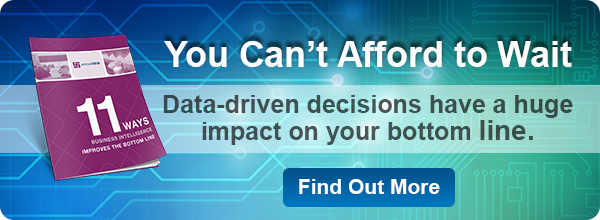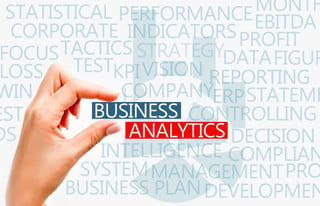 Rest assured. LTPAC Clinical executives can know rather easily.
Rest assured. LTPAC Clinical executives can know rather easily.
What keeps you up at night? When I ran SNFs, many things would intrusively leap onto the stage of my dreams, stealing the limelight. Their discordant presence would dash the quiet and restful performance currently playing, causing me to start into a sudden and unwelcome wakefulness. It was one thing to steal the limelight, it was another to completely take over the show and lock the stage door to my more sedate and slumber-inducing dreams. Stifling a cry, I would sit bolt upright in bed, beads of sweat on my furrowed brow. One of those frequent limelight-stealing imps was a nagging doubt about my facility’s compliance.
Compliant to what? Federal and State regulations? Fire and safety? The Fair Labor Standards Act? Safe Harbor? HIPAA? Corporate standards and objectives? The list goes on and on, each list member competing animatedly for my attention. “No sleep tonight,” I’d groan. But times have changed and so has technology potentially barring the stage doors to unsolicited dream disturbers.
In the days before automated data mining and business intelligence (BI)-generated dashboards and reporting, I would have to make a mental note to investigate if and how compliant we were, recognizing that the research alone would take quite a lot of time, assuming no interruptions (silly me), sorting through charts, files, and printouts. But today WITH BI at a manager’s fingertips, those with compliance concerns, including clinical managers, have ready access to critical Key Performance Indicators (KPIs). With Business Intelligence, clinical managers can conveniently view a variety of KPIs which they can make their own. (I’ll get to that shortly.)
Let’s take a look at some of the KPIs clinicians can view to discover in measurable terms if their areas of concern are compliant. With regular input either directly from the data which resides within their clinical application automatically “pumped” into the data warehouse or keyed in directly, clinicians have access to frequently refreshed information. This information can include such KPIs as in-house-acquired or community-acquired pressure ulcers with the number of residents with pressure ulcers at what stages and at what percent of the average daily census over a month’s period of time or trended over a 12-month period.
Restraints? Weight loss? Anti-psychotic use? Infections? Readmissions? Falls/Accidents? Sentinel events, such as dehydration or fecal impaction? Indwelling catheters? Pain management? Hour per patient/resident day compared to state standards and to budget? Overtime usage? And more. If the data exists, the information can be viewed in the BI dashboard.
Now, I referred earlier to managers making KPIs their own. How about comparing the KPIs against benchmarks the clinical team has created based on regulations and company/facility-established standards, usually set to exceed the regulatory requirements? It’s all in one dashboard. No longer do clinicians have to wait for reports to be researched, compiled, published, and distributed. Log in and find out. No more uncertainty. Just discover. Take action. Get results.
With BI, this potentially sleep-disruptive concern can be put to rest. It’s called peace of mind. Take a dose of BI every day and sleep well.
/Prime-Care-Technologies-Logo.png?width=191&height=55&name=Prime-Care-Technologies-Logo.png)


 “business intelligence” (or business analytics) and convert it to “intelligent business.” Sometimes, playing with words (which is fun for me at times) can reshape our paradigms. “Business intelligence” implies the use of systems and processes which simplify the retrieval of data and its conversion into actionable information readily accessible to decision makers in real time
“business intelligence” (or business analytics) and convert it to “intelligent business.” Sometimes, playing with words (which is fun for me at times) can reshape our paradigms. “Business intelligence” implies the use of systems and processes which simplify the retrieval of data and its conversion into actionable information readily accessible to decision makers in real time Likely you read the article in the November 14, 2014 McKnight’s Daily Update entitled,
Likely you read the article in the November 14, 2014 McKnight’s Daily Update entitled,  So what’s a provider to do? Assuming providers have integrity, let’s discuss accuracy. In the past, when I was running buildings, I had to collect the data and create the reports manually, cross-checking multiple times to make sure the reports were accurate - a laborious, tedious, and time-consuming task. Providers today, however, have a much easier and time-saving alternative - automated data mining and business intelligence (BI). Retrieving, compiling, and repurposing the data into useful, relevant, timely, accurate, and actionable information is fully automated through data mining and BI technologies. The data comes directly from the provider’s time and attendance and payroll systems, combined with its clinical and financial software. The BI tool retrieves that data and stores it in a data warehouse from which it creates reports usually viewable in a dashboard. Further, the reports can be as “real time” as the provider needs them to be. As soon as an employee punches in or out that data is stored and therefore information can be retrieved and reported throughout the day.
So what’s a provider to do? Assuming providers have integrity, let’s discuss accuracy. In the past, when I was running buildings, I had to collect the data and create the reports manually, cross-checking multiple times to make sure the reports were accurate - a laborious, tedious, and time-consuming task. Providers today, however, have a much easier and time-saving alternative - automated data mining and business intelligence (BI). Retrieving, compiling, and repurposing the data into useful, relevant, timely, accurate, and actionable information is fully automated through data mining and BI technologies. The data comes directly from the provider’s time and attendance and payroll systems, combined with its clinical and financial software. The BI tool retrieves that data and stores it in a data warehouse from which it creates reports usually viewable in a dashboard. Further, the reports can be as “real time” as the provider needs them to be. As soon as an employee punches in or out that data is stored and therefore information can be retrieved and reported throughout the day. Data mining represents wealth, a wealth of opportunity, action, and success. Directly put, data mining (the process of centralized data management and retrieval) helps LTC providers find hidden treasures of knowledge, not just data. Just as rare gems or precious minerals are only valuable when processed from the ore that is unearthed, so too is knowledge when refined from countless bytes of data. Refined data transformed into information becomes knowledge and knowledge – the power to act. Data mining, therefore, helps executives discover what is happening now, track trends, anticipate with some accuracy what may happen in the future, and explore the strengths of possible actions.
Data mining represents wealth, a wealth of opportunity, action, and success. Directly put, data mining (the process of centralized data management and retrieval) helps LTC providers find hidden treasures of knowledge, not just data. Just as rare gems or precious minerals are only valuable when processed from the ore that is unearthed, so too is knowledge when refined from countless bytes of data. Refined data transformed into information becomes knowledge and knowledge – the power to act. Data mining, therefore, helps executives discover what is happening now, track trends, anticipate with some accuracy what may happen in the future, and explore the strengths of possible actions. In the Spring of this year, I used baseball as a metaphor for the “
In the Spring of this year, I used baseball as a metaphor for the “